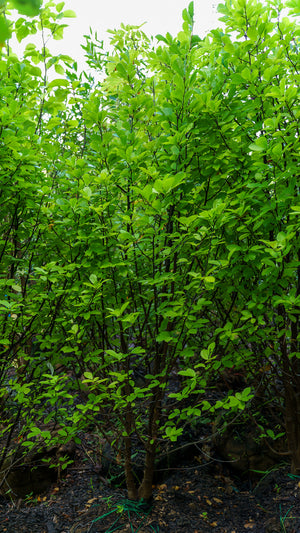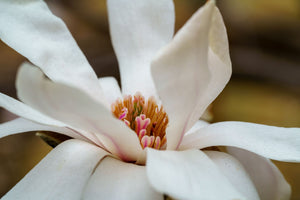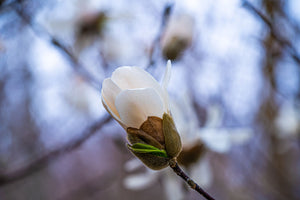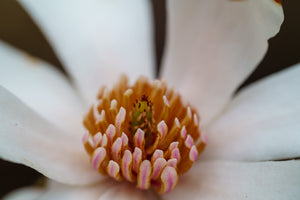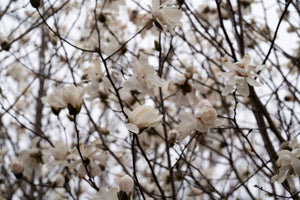Merrill Magnolia: Uncovering the Elegance of a Timeless Landscape Favorite
Welcome to our latest edition of the "Plant of the Week" series! This week, we turn our attention to the Merrill magnolia (Magnolia x loebneri 'Merrill'), known for its enchanting spring beauty. Celebrated for its elegant and fragrant blooms, the Merrill magnolia is a standout favorite among gardeners and landscaping aficionados alike. Join us as we explore the unique features and seasonal splendor of this exceptional tree, unveiling why it's a cherished addition to any garden or landscape.

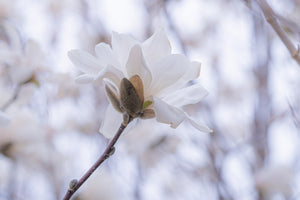
WHAT MAKES THE MERRILL MAGNOLIA SPECIAL?
The Merrill magnolia (Magnolia x loebneri 'Merrill') stands out as a captivating addition to any landscape, celebrated for its stunning spring display. Its profusion of star-like, fragrant white flowers blankets the tree, transforming the environment into a scene of natural elegance. As a distinctive focal point, Merrill lends an air of sophistication and vibrancy to gardens and diverse outdoor settings.
Beyond its ornamental allure, the Merrill magnolia exhibits remarkable adaptability. Flourishing in various soil types and light conditions, this versatile tree is a valuable asset to landscapes, thriving in both full sun and partial shade. Whether standing alone as a centerpiece or seamlessly integrated into mixed plantings, its well-balanced form contributes dimension and character, enhancing the visual appeal of any garden.
With its robust adaptability and stunning spring display, the Merrill magnolia promises to be a cherished centerpiece in any garden, providing enduring beauty and a touch of natural elegance to enrich outdoor spaces for years to come.
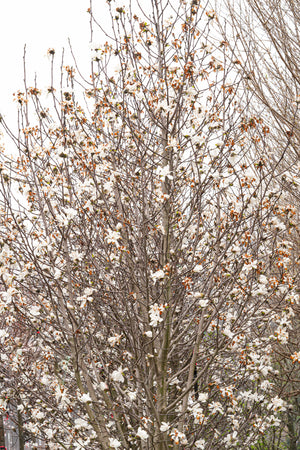
WHAT IS MERRILL MAGNOLIA USED FOR?
The Merrill magnolia is a tree that marries visual charm with practical advantages, making it a versatile addition to various landscapes and gardens. Here are the key uses and benefits of the Merrill:
Ornamental Elegance: The Merrill magnolia is highly prized for its stunning spring display. Its profusion of star-like, fragrant white flowers transforms the landscape, adding a touch of elegance and enchantment to gardens and outdoor spaces.
Shade Provider: While the Merrill has a more open canopy compared to other shade trees, it still offers some shade beneath its branches. It can be strategically planted to provide dappled shade in smaller outdoor areas like patios, garden beds, and seating spots.
Pollinator Magnet: The Merrill magnolia's fragrant flowers attract pollinators, such as bees and butterflies, enhancing biodiversity and contributing to the health of the ecosystem.
Specimen Plant: Due to its striking appearance and elegant form, Merrill is an excellent choice as a specimen plant. Its graceful silhouette and seasonal beauty make it a standout feature in any garden or landscape design.
Low-Maintenance Beauty: Resilient and hardy, the Merrill magnolia can adapt to various soil types and environmental conditions. It is relatively low-maintenance, requiring minimal care once established, making it an ideal choice for both novice and experienced gardeners.
Seasonal Interest: Beyond its spring bloom, the Merrill magnolia's lush green foliage provides visual interest throughout the growing season, and its attractive seed cones add winter appeal to the landscape.
The Merrill magnolia stands as a multifaceted tree, offering both aesthetic appeal and practical usefulness. Whether enhancing landscapes, attracting pollinators, or providing seasonal interest, Merrill is a valuable addition to any outdoor space.
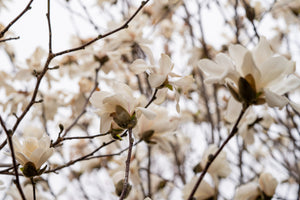
HOW TO CARE FOR MERRILL MAGNOLIA
The Merrill magnolia is a tree that demands minimal care, thriving with ease when these guidelines are followed:
Planting: Choose a location with well-drained soil and ample sunlight. While it prefers well-drained soil, it adapts well to various types, including clay. Optimal planting times are in fall or early spring, allowing the root system to establish before extreme weather conditions.
Watering: Maintain slightly moist soil, avoiding overwatering to prevent root rot. Deep and thorough watering, especially during dry spells, is essential for even moisture. Avoid letting the tree sit in waterlogged conditions.
Pruning: The Merrill typically maintains an appealing shape with minimal pruning. During the dormant season, selectively prune to remove dead, damaged, or crossing branches, promoting structure and good air circulation.
Fertilizing: Merrill magnolias do not demand heavy fertilization. Apply a balanced, slow-release fertilizer in spring before new growth emerges to provide essential nutrients for healthy growth and abundant foliage.
Mulching: Apply organic mulch around the tree's base, leaving space around the trunk to prevent excess moisture retention and potential diseases. Mulching conserves moisture, regulates soil temperature, and suppresses weed growth.
Protection: While generally hardy, young saplings may benefit from winter protection. Consider using a burlap wrap or tree guard to shield the trunk and lower branches from extreme cold and harsh winds.
Following these care instructions ensures the enduring health and beauty of your Merrill magnolia, allowing you to appreciate its ornamental brilliance and enjoy its presence in your outdoor space for years to come.
CONCLUSION
The Merrill magnolia (Magnolia x loebneri 'Merrill') stands as a symbol of timeless beauty and adaptability in ornamental trees. Its exquisite blossoms and graceful form effortlessly enhance landscapes, whether as a focal point or blended into mixed plantings. Beyond its captivating aesthetics, this hardy tree is well-suited to various environments, requiring minimal maintenance. The Merrill not only elevates the visual allure of outdoor spaces but also provides shade and supports local biodiversity. With careful planting and maintenance, such as well-drained soil and attentive watering, it ensures enduring beauty and resilience, blending aesthetics with nature's artistic charm.

